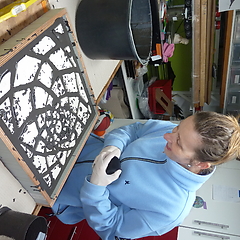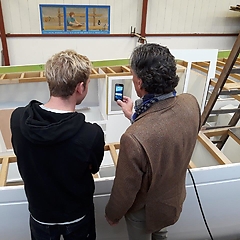The clog, or wooden shoe, is still manually made in the Netherlands. Knowledge of the anatomy of the foot is essential for the clog maker to make a really wearable, comfortable clog. Making clogs is a craft that is passed on from master to apprentice. The clog maker saws a tree into slices (bollen). These are as thick as the intended length of the clog. The craftsman splits the wood like the pieces of a pie, every lump will become a clog. With a hand axe he models the wood and refines this with a praalmes. When the outside is nearly finished, the clog is hollowed out with a special drill or a chisel. The clogs are finished and have to dry a number of weeks, sometimes months, for clogs are made from fresh, hence damp wood. They then are decorated with carvings or they are painted. Shape and decoration depend on the region. There are special clogs for special occasions, like bridal clogs, and for professions, like fisherman’s clogs.



